Awon Museum & Hanok Stay (아원고택)
6.3Km 2024-12-12
516-7 Songgwangsuman-ro, Soyang-myeon, Wanju-gun, Jeonbuk-do
+82-63-241-8195
Awon Museum & Hotel is a beautiful 250-year-old hanok building that was moved from Jinju in Gyeongsangnam-do to Oseong Village at the foot of Jongnamsan Mountain in Wanju, Jeonbuk State. Awon stands out from other hanok buildings in the way it merges traditional hanok with modern architecture and art. The name means "my garden," implying Awon's desire to be a cultural space for all who visit.
NocWoonJae (녹운재)
6.4Km 2024-12-23
472-18 , Songgwangsuman-ro, Wanju-gun, Jeonbuk-do
+82-10-4450-6565
Nokwoonjae is a guest hanok in Oseong Hanok Village, Wanju-gun, Jeollabuk-do. It comprises two houses built on sloping land - Naunchae above and Unahchae below - with a corridor connecting the two. All rooms are built of timber and red clay - beneficial to both mind and body - and have large windows to let you enjoy natural views and breezes.Toast, jam, and milk are provided for breakfast, and self-catering is possible. Sagunja painting and tea ceremony experiences are offered, while local visitor destinations include Songgwangsa Temple, Wibongsa Temple, the 60m Wibong Falls (one of Wanseon’s ‘Eight Splended Views’) and Jeonju Hanok Village.
Happydream (행복드림한옥)
6.4Km 2024-08-05
181-21 , Bongseoan-gil, Wanju-gun, Jeonbuk-do
+82-63-247-0050, +82-10-3677-5339
Dueok Happydream Village is located in Bongseo-gol, Wanju-gun, Jeollabuk-do - a location said to be one of the most propitious in Korea, owing to the surrounding mountains’ resemblance to the Bonghwang mythical bird. The guesthouse’s tile-roofed buildings are set in a wide grassy yard against a background of green mountains. As well as accomodation the village operates various nature and traditional culture experience programs, some of which take place at the guesthouse. The rooms are small but clean and comfy, and with the doors open offer scenic views.
Daea Arboretum (대아수목원)
6.5Km 2024-04-07
94-34, Daeasumok-ro, Dongsang-myeon, Wanju_Gun, Jeonbuk-do
+82-63-280-4590
Daea Arboretum is located in Sancheon-ri, Wanju. Daea Arboretum has an extensive forest of 300,000 ornamental trees. The forest is equipped with spring water, an observatory, forest museum, and a forest classroom. The arboretum focuses on preserving the forest ecosystem, research and utilize domestic plants, and promote forest education to the public. Daea Arboretum has a total of 2,683 species of diverse plants.
Wanju Songgwangsa Temple (송광사(완주))
8.4Km 2024-04-07
255-16, Songgwangsuman-ro, Wanju-gun, Jeonbuk-do
+82-63-243-8091
Songgwangsa Temple in Wanju-gun, Jeollabuk-do has a unique history that spans a period of over a thousand years. For many years the temple lay incomplete until Monk Bojo Chejing began reconstruction in the 7th year of King Gyeongmun of Silla (AD 867). The temple was destroyed at one point in time, but Master Monk Jinul prayed that it be rebuilt. In accordance with his fervent hopes, in the 1600s the monk’s followers rebuilt a number of the temple’s halls and buildings, many of which can still be seen today. The temple is also remembered as the temple that King Injo helped rebuild with the hope that his two sons, who had been taken hostage by the Qing dynasty during the Byeongjahoran War (Chinese invasion of Korea in 1636), would be returned safely and that Buddha would heal the nation.
One of the Korea’s four major temples, Songgwangsa is home to Jijangbosal and Siwangsang statues (found in Jijangjeon Hall), a Seokgayeorae statue, and 500 Nahansang statues (found in Nahanjeon Hall). The temple is also home to eight Tangible Cultural Assets and four Treasured Cultural Assets: Daeungjeon Hall, the Samsebulsang statues, the bell-tower, and the Sacheonwangsang statue.
Beloved for its historical significance as well as its beauty, the temple draws throngs of worshipers throughout the year. In spring, many tourists flock to the area to explore the temple and walk through the nearby cherry blossom tunnels. A worthwhile attraction for visitors of all ages, the temple is particularly well-suited for those with mobility problems since it is located on ground level.
Open Space Nu-e (복합문화지구 누에)
8.9Km 2024-04-06
462-9 , Wanju-ro, Wanju-gun, Jeonbuk-do
Nu-e, a complex cultural district located in Wanju-gun, Jeollabuk-do, opened with the goal of "a living space where everyone communicates through art." As part of the cultural regeneration project, it was built in the Jeollabuk-do Jameop (silkworm business) testing center complex and is carrying out projects such as cultural and artistic education, exhibition planning, and the creation of creative spaces. Facilities include Nu-e Art Hall, where various art exhibitions and performances are held, guesthouse 'Sum' for local residents, a camping ground and lounge, a pottery room, a kiln room, etc. There is a children's space called "Dreaming Nu-e Playground" where adults are not permitted, making it a good place for family trips. It is also recommended to visit the Jeonbuk Provincial Museum of Art and Samnye Culture and Art Village, representative tourist facilities in Wanju-gun.
Oseongje Reservoir (오성제 저수지)
9.6Km 2024-10-21
Daeheung-ri, Soyang-myeon, Wanju-gun, Jeollabuk-do
Oseongje Reservoir provides a natural rest area for locals with a waterside path. Located nearby is a gallery and photo spot. The area quickly became a must-visit attraction after featuring in BTS' 2019 Summer Package.
Wanggung Dawon (왕궁다원)
12.7Km 2024-04-07
21-5 Sagok-gil, Wanggung-myeon, Iksan-si, Jeonbuk-do
Wanggung Dawon is a hanok café built in the 1800s. It was once the residence of Song Byungwoo, a rich person in the region, and has been operating as a traditional tea house since 2008, preserving the charm of the old hanok. The café offers a wide variety of teas, with the signature menu item being ssanghwatang (herbal tonic tea), a traditional Korean beverage. Ssanghwatang is made with ingredients such as jujube, ginseng, and chestnuts, known for its warming properties.
Wanju Hwaamsa Temple (화암사(완주))
12.7Km 2024-04-07
271 , Hwaamsa-gil, Wanju-gun, Jeonbuk-do
The temple was founded by National Preceptor Ilgyo in the 3rd year of King Hyoso of Silla (694), and it is said that Seolchong once studied here. Geuknakjeon Hall was built in 1425 with the benefactor of Seong Dal-saeng. Uhwaru is also designated as a treasure as a building that shows the characteristics of ancient architecture. The bronze bell made during the reign of King Gwanghaegun was cast by Hoyeong, and it is called the alarm clock because it made a sound when something unfortunate happened to the temple or the country to inform of the emergency. Hwaamsa Temple is surrounded by the primeval forest of Myeongsan Mountain like a folding screen and has a valley with clear water flowing.
* Major cultural assets: Hwaamsa Uhwaru (Treasure), Hwaamsa Geuknakjeon (National Treasure), Hwaamsa Bronze Bell (Local Tangible Cultural Property), Hwaamsa Reconstruction Monument (Local Tangible Cultural Property)
Daeseung Hanji Village & Hanok Traditional Culture Experience Center (대승한지마을한옥전통문화체험관)
12.9Km 2024-08-05
18-4 , Bogeom-gil, Wanju-gun, Jeonbuk-do
+82-63-242-1001
Daeseung Hanji Village in Wanju-gun, Jeollabuk-do, is where the famous Goryeoji (‘Goryeo Paper’) was first made in Goryeo 1,000 years ago. All guestrooms in the village are equipped with toilets, AC and water purifiers, plus pillows made of Korean paper and comfortable blankets. The dining hall kitchen can be used by guests, there is a large (60 sq metre) seminar room, and a yard where traditional games such as Geunae (swing) and Tuho (arrows) are played. The village runs a Hanji Experience Center, where you can learn about hanji history, manufacture and calligraphy.
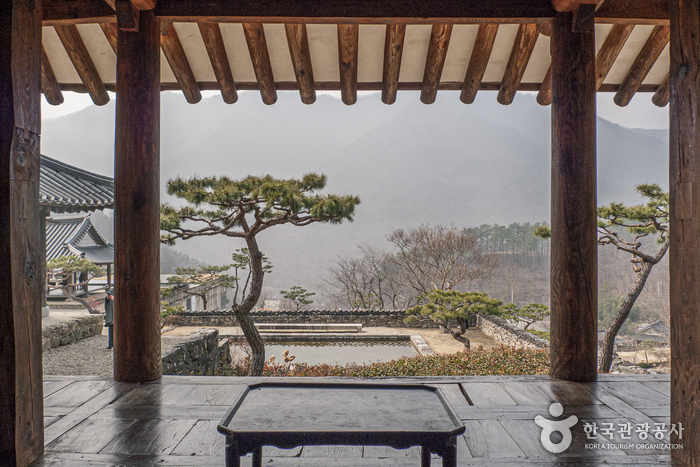
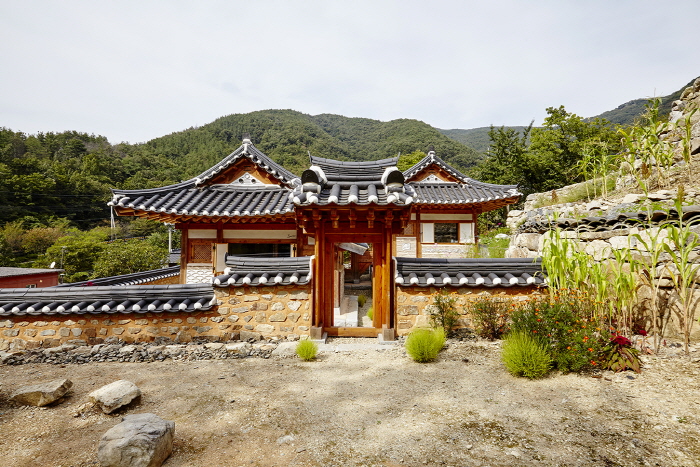
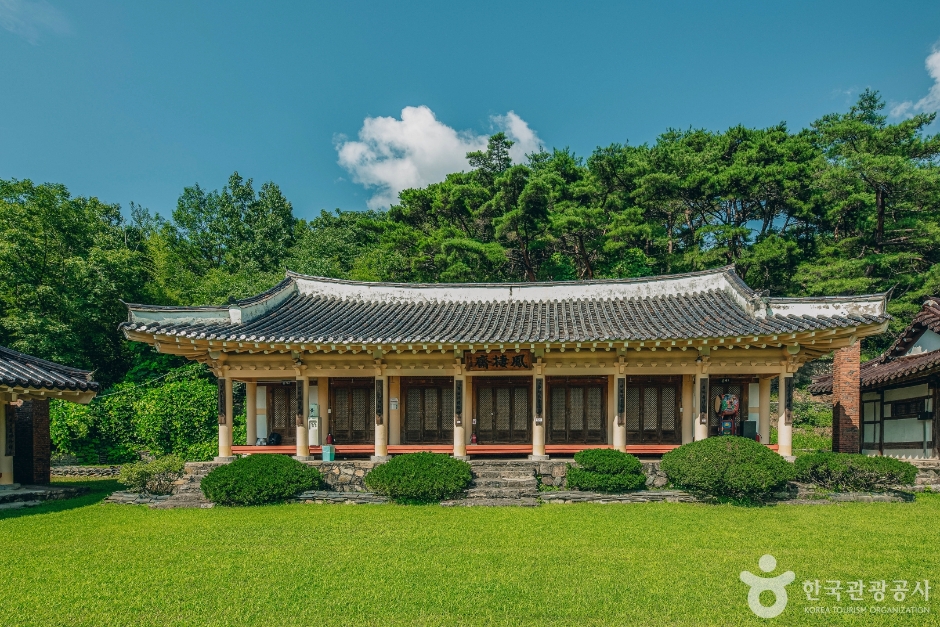

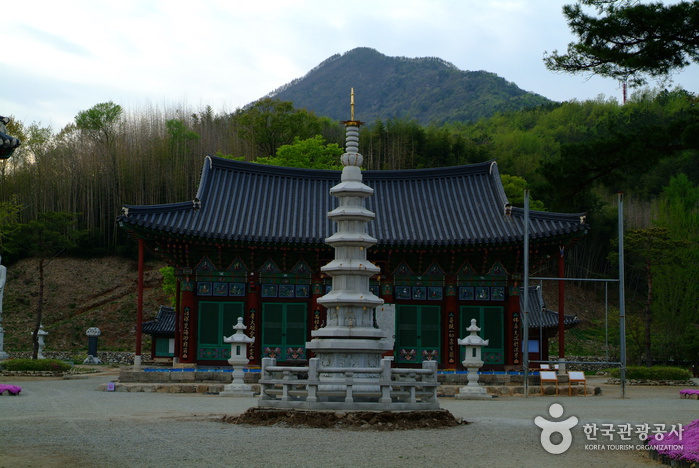
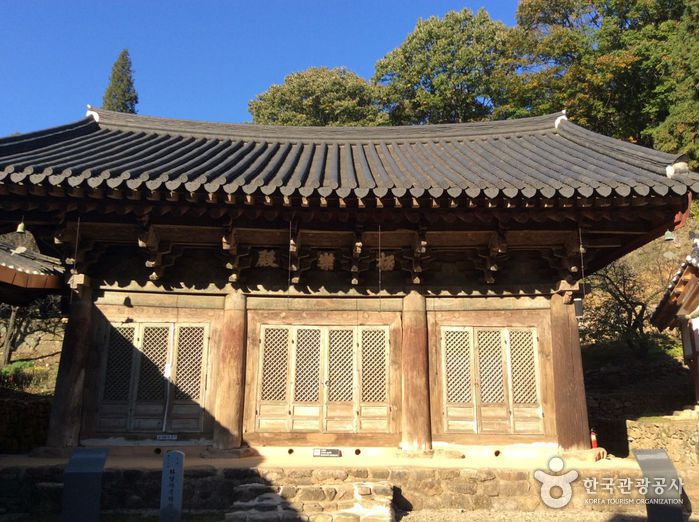
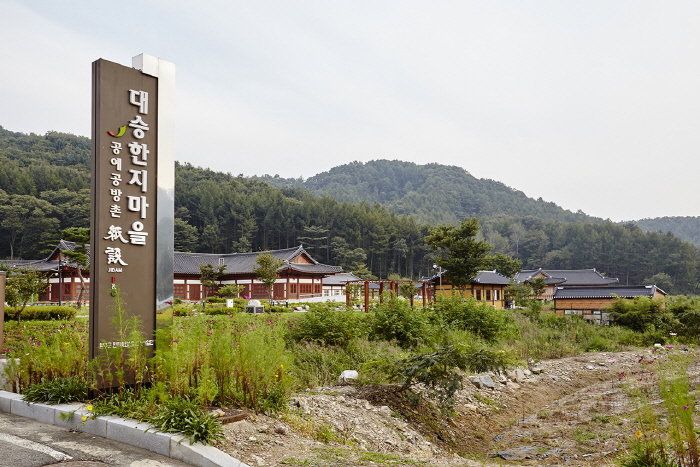
 English
English
 한국어
한국어 日本語
日本語 中文(简体)
中文(简体) Deutsch
Deutsch Français
Français Español
Español Русский
Русский